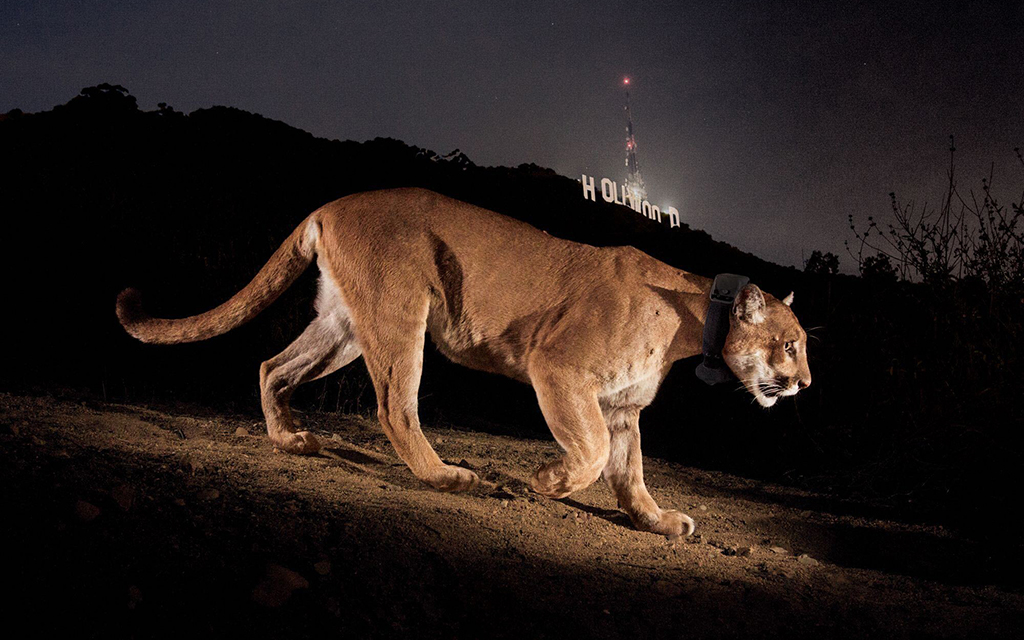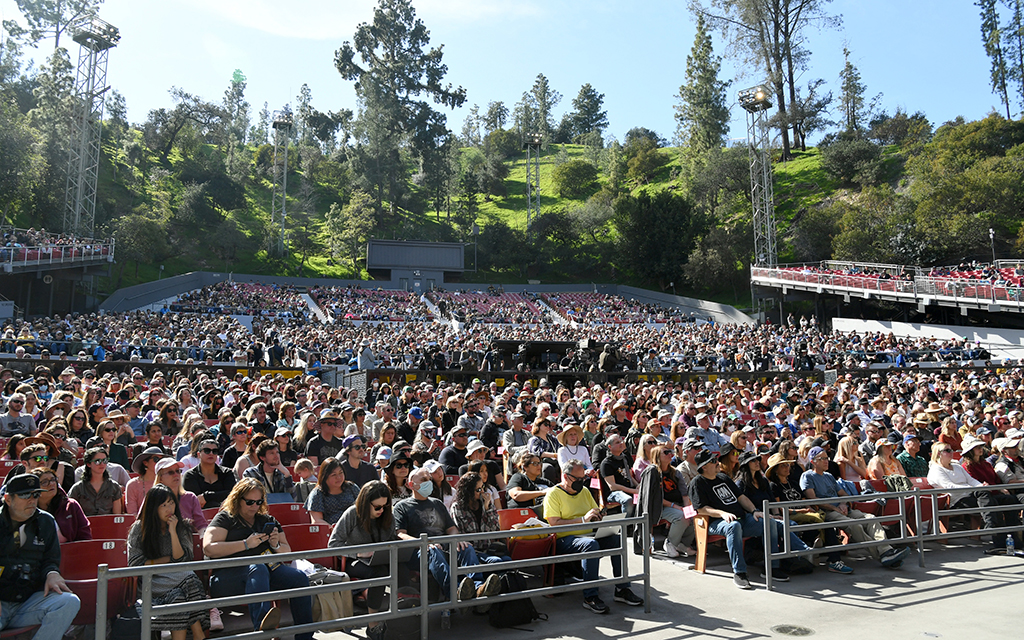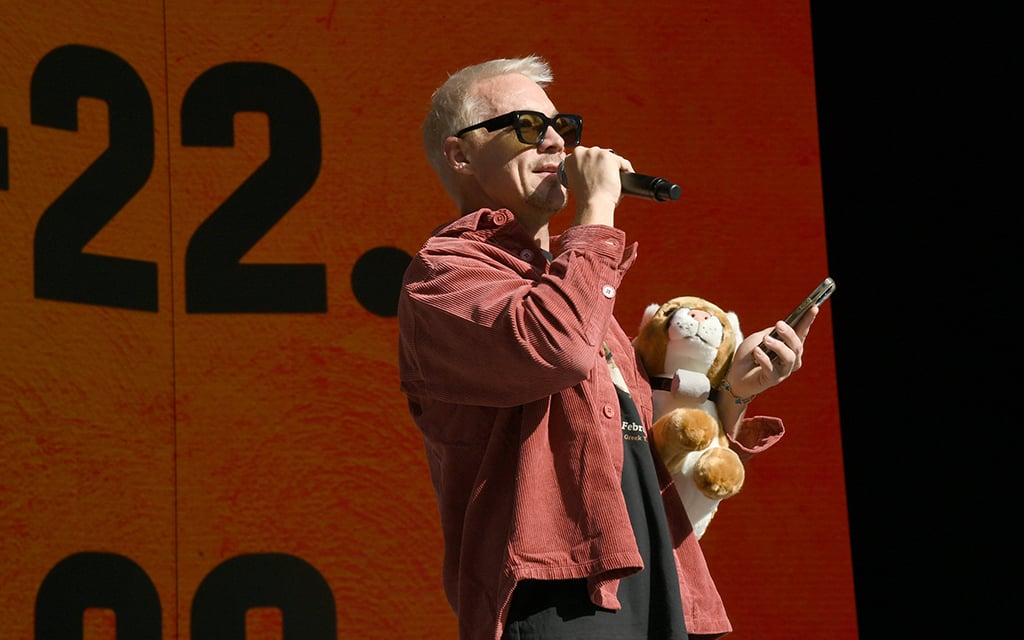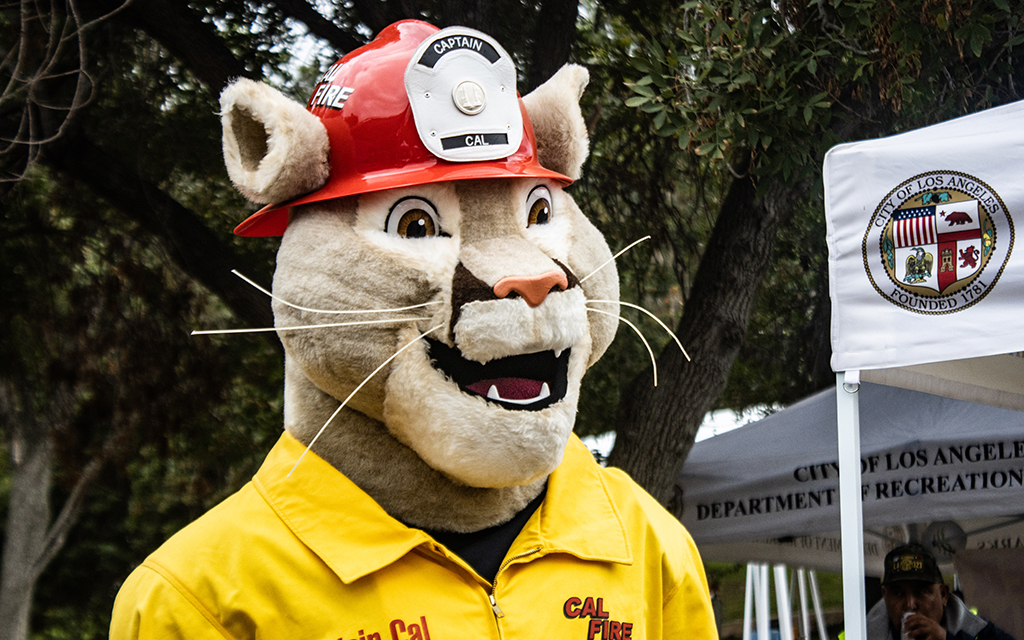LOS ANGELES – For Angelenos, he was P-22, the Brad Pitt of cougars, LA’s loneliest bachelor.
But for the Gabrielino-Tongva Band of Mission Indians, an indigenous community of Southern California, P-22 was a tukuurot, or mountain lion in the native language and a de facto member of the tribe’s extended family.
P-22’s life was celebrated this month at a two-hour ceremony at an outdoor amphitheater near where he once roamed. Thousands came to hear poets, rappers and celebrities like DJ Diplo recount the lion’s story.
The Natural History Museum of Los Angeles County received P-22’s body from the California Department of Fish and Wildlife in San Diego. But for Gabrielino-Tongva tribal members, only a proper burial will do.
Mona Morales Recalde, the Gabrielino-Tongva’s community outreach coordinator, says the tribe lives their life in community with nature.
“It’s a shared relationship”, Recalde said. “In relationship with Mother Earth, she takes care of us and we take care of her.”
Since his birth in the Santa Monica Mountains, P-22’s graceful catwalks took this city by surprise. Whether it was crossing two freeways to take up residence for years in the urban wilderness of Griffith Park, an evening stroll in Los Angeles Zoo or scaring customers by appearing outside a Trader Joe’s market, his memory lives on.
P-22 was euthanized Dec. 17 at age 12 after having been captured when he ventured into neighborhoods near the park.
The decision was made after P-22 was found to be suffering from many long-term health concerns: failing kidneys, a weight of 90 pounds instead of the normal 125, head and eye injuries, a hernia, a parasitic skin infection likely transmitted from domestic cats, heart disease and more, doctors from the San Diego Zoo Safari Park said, according to the National Wildlife Federation.
P-22’s body was escorted by members of the Gabrielino-Tongva and other tribes from San Diego to Los Angeles. Tribal representatives held a blessing ceremony upon P-22’s arrival to the Natural History Museum. But they did not retain the body and now they would like to see a proper burial rather than seeing P-22’s remains stuffed and put on display.
“It does not matter if it is Griffith Park or the Santa Monica Mountains, we believe he should be returned to nature,” Recalde said. “Him being in a museum takes away his relative quality,” Recalde paused briefly. “You wouldn’t put someone that’s near and dear to you that passed away in a museum right?”
For the moment, the tribe’s request is being honored. Museum officials say they do not plan to display P-22’s body, the Los Angeles Times reported.

Mountain lion P-22 made his home in Los Angeles’ Griffith Park for more than a decade before moving down to neighborhoods, becoming ill and being euthanized in 2022. He was first caught on camera in 2012. (Photo by State Winter/National Geographic)
Whether his body is eventually put on display or not, P-22’s legend will live on.
“He beat the odds time and time again”, said Tina Calderon in a poem she dedicated to P-22 at the celebration at the Greek Theatre. Calderon is a member of the Gabrielino-Tongva community, a poet, traditional dancer and storyteller.
Beth Pratt, California director for the National Wildlife Federation, said that P-22 leaves a legacy: His fame helped provide a boost for what will be the Wallis Annenberg Wildlife Crossing, a span across the 101 freeway connecting Ventura and Los Angeles. It broke ground last year.
Pratt said the big cat also helped usher in an “age of wildlife crossing”’ around the globe, galvanizing public support. She said $100 million has been earmarked to date in the California state budget and $350 million in a federal appropriations bill for construction of such crossings.
“P-22 inspired something deeper for people in Los Angeles and beyond to reexamine our preconception of wildness and what had almost been lost by thinking we needed to banish nature from our midst in our cities,” Pratt said.




